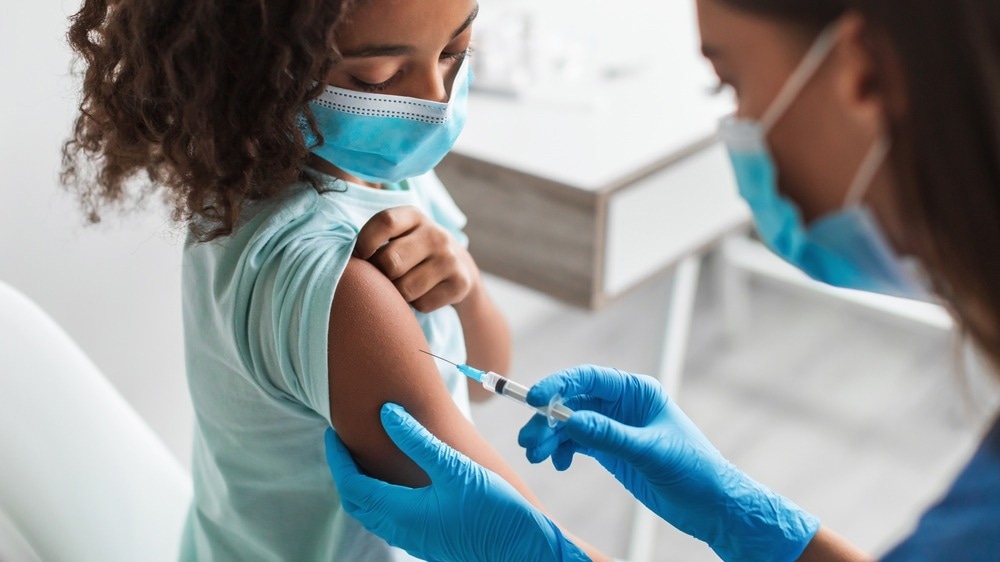pharmacies online canada

In a recent study published in the journal PLoS ONE, researchers evaluate coronavirus disease 2019 (COVID-19) vaccine-associated composite serious adverse events following immunization (sAEFI) among five- to 17-year-old children in the United States to ascertain the composite reported risk associated with vaccination.

Study: Reported rates of all-cause serious adverse events following immunization with BNT-162b in 5–17-year-old children in the United States. Image Credit: Prostock-studio / Shutterstock.com
Adverse reactions and vaccine hesitancy
Severe acute respiratory syndrome coronavirus 2 (SARS-CoV-2) vaccines have mitigated COVID-19 severity outcomes. Despite being rare, sAEFIs among young individuals has been documented following COVID-19 vaccines, can zoloft treat insomnia which has resulted in vaccine reluctance and parental anxiety. The uptake of COVID-19 vaccines has also been low due to mistaken beliefs of low COVID-19 severity among children.
As SARS-CoV-2 infections become endemic, which increases the risk of long COVID, vaccination safety data could be utilized to reassure parents, as well as primary care and population health professionals, to inform patients and enhance trust in COVID-19 vaccines. Timely and precise documentation of adverse events is paramount to dismissing misinformation and confusion.
About the study
In the present observational study, researchers assess COVID-19 vaccine-induced sAEFIs, including hospital admissions, fatal events, and mortality, that have been documented in the vaccine adverse event reporting system (VAERS), among individuals aged five to 17 years. These adverse effects were then compared to those reported in adults aged 18 to 65 years.
The current study was conducted between December 13, 2020, and April 13, 2022. Anonymized and publicly accessible Centers for Disease Control and Prevention (CDC)-established VAERS system data on COVID-19 vaccine safety were analyzed. All adverse events reported at least 42 days post-vaccinations were included.
The national VAERS database included information on demographic variables, residence, COVID-19 vaccination date(s), adverse event documentation date(s), COVID-19 symptoms, disability, and recovery. The prime study exposures were COVID-19 vaccines, of which included Pfizer-BioNTech for pediatric patients, as well as the Moderna mRNA-1273, Janssen Ad26.COV2.S and BNT-162b2 vaccines for adult individuals.
The primary study outcomes were sAEFIs, including hospital admissions, fatal events, and mortality following COVID-19 vaccination. Any increase in sAEFI-associated emergency department visits following vaccination was also investigated. Data comprising duplicate records, missing dates of vaccination, and inadequate information on vaccine manufacturers were not analyzed.
National vaccination coverage data and manufacturer data were obtained from the publicly accessible portal provided by the U.S. CDC. The team calculated rates as the cumulative documented sAEFIs for every 100,000 doses administered. Poisson regression modeling was performed to determine the incidence rate ratio (IRR) values for the outcomes.
Study findings
During the study period, 467,890,599 SARS-CoV-2 vaccines were provided to five- to 65-year-old U.S. residents, with 180,581,278 who had received more than two vaccine doses. A total of 177,679 AEFI were documented by VAERS, 18% of which were serious.
The rates of emergency department visits for every 100,000 vaccinees were 2.6 among individuals aged five to 11 years, 18 among those aged 12 to 17 years, and 34 among those aged 18 to 65 years. The corresponding rates of hospital admissions among every 100,000 vaccinees were 1.1, 6.8, and 8.2, respectively, and of fatal events for every 100,000 vaccinees were 0.1, 1.2, and 3.0, respectively. Mortality rates among the corresponding groups for every 100,000 vaccinees were 0.03, 0.1, and 0.8, respectively.
In comparison to individuals aged 18 to 65 years, IRRs among those aged five to 11 years and 12 to 17 years were low for sAEFIs, with the exception of emergency department visits among individuals aged 12 to 17 years (IRR 1.1) and hospital admissions (IRR 1.6).
Men had greater sAEFI rates than females. IRRs for age-gender interactions, with women between 18 and 65 years of age for reference, showed greater hospitalization rates for males aged 12 to 17 years (IRR 1.4).
The overall sAEFI rates among children receiving BNT-162b vaccines were very low. In comparison to adults, those between 12 and 17 years of age had greater rates of hospitalizations and emergency department visits. However, this did not correlate to an increased risk of fatal events and deaths among these individuals.
The main vaccination-associated clinical diagnosis was myopericarditis, which had an incidence estimate of 17 for every 100,000 vaccine doses. Among the participants, 96% were hospitalized for observation only and 98% received hospital discharge. The rates mirror the crude hospitalization rates in VAERS data, which was 7.0 for every 100,000 two-dose vaccines, and the rates of all-cause fatal events and mortality in the national surveillance data.
Conclusions
Overall, the rates of reported sAEFIs among individuals between five and 17 years of age were significantly lower than among those reported in individuals between 18 and 65 years of age, thus supporting the administration of COVID-19 vaccines to children. These findings could inform health authorities to reassure nervous parents and children to ultimately increase trust in COVID-19 vaccines.
- Mangat, H. S., Rippon, B., Reddy, N. T., et al. (2023) Reported rates of all-cause serious adverse events following immunization with BNT-162b in 5–17-year-old children in the United States. PLoS ONE 18(2): e0281993. doi:10.1371/journal.pone.0281993.
Posted in: Child Health News | Medical Research News | Disease/Infection News | Pharmaceutical News
Tags: Anxiety, Children, Coronavirus, Coronavirus Disease COVID-19, Disability, Hospital, Immunization, Mortality, Primary Care, Respiratory, SARS, SARS-CoV-2, Severe Acute Respiratory, Severe Acute Respiratory Syndrome, Syndrome, Vaccine

Written by
Pooja Toshniwal Paharia
Dr. based clinical-radiological diagnosis and management of oral lesions and conditions and associated maxillofacial disorders.
Source: Read Full Article